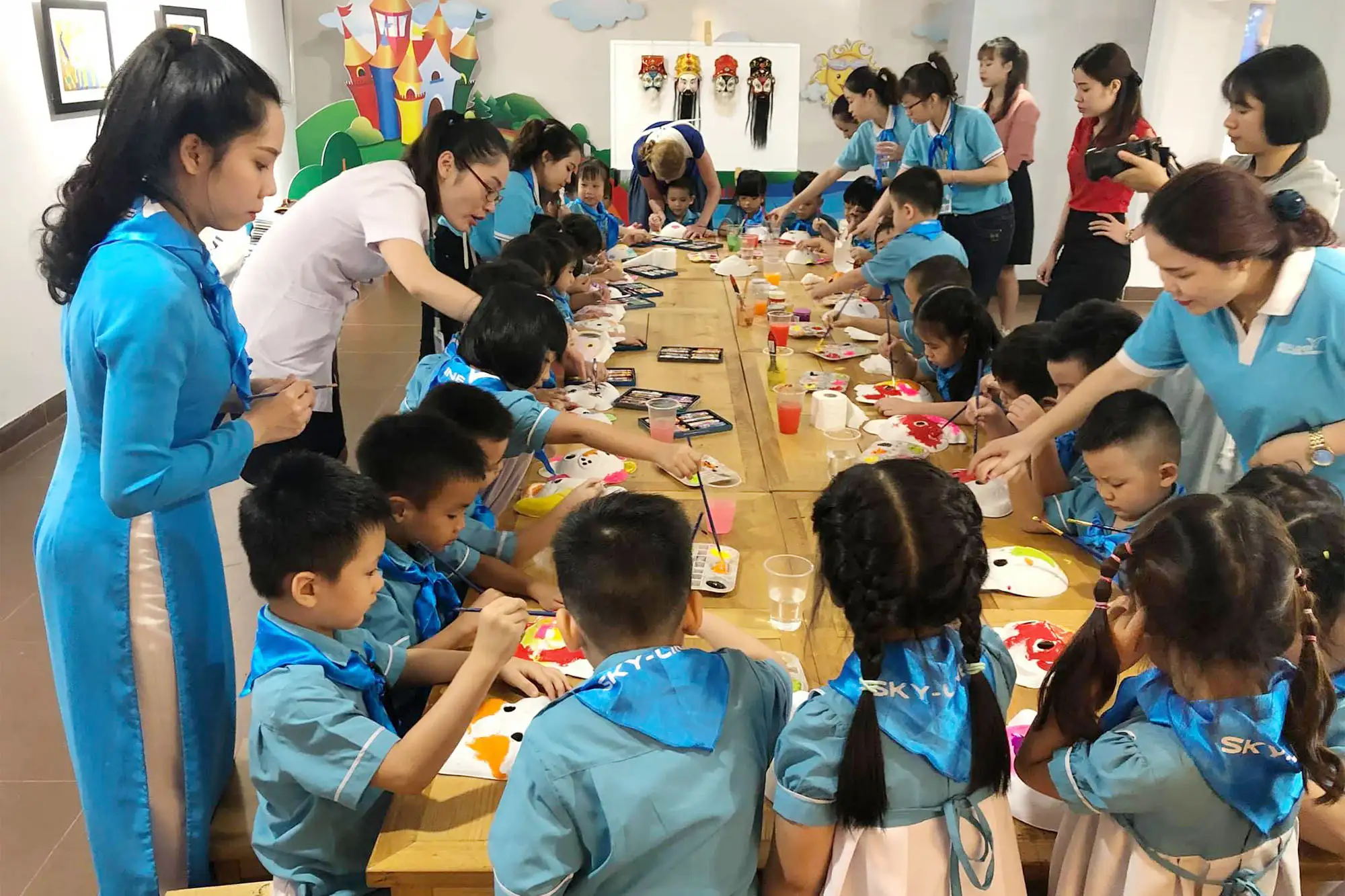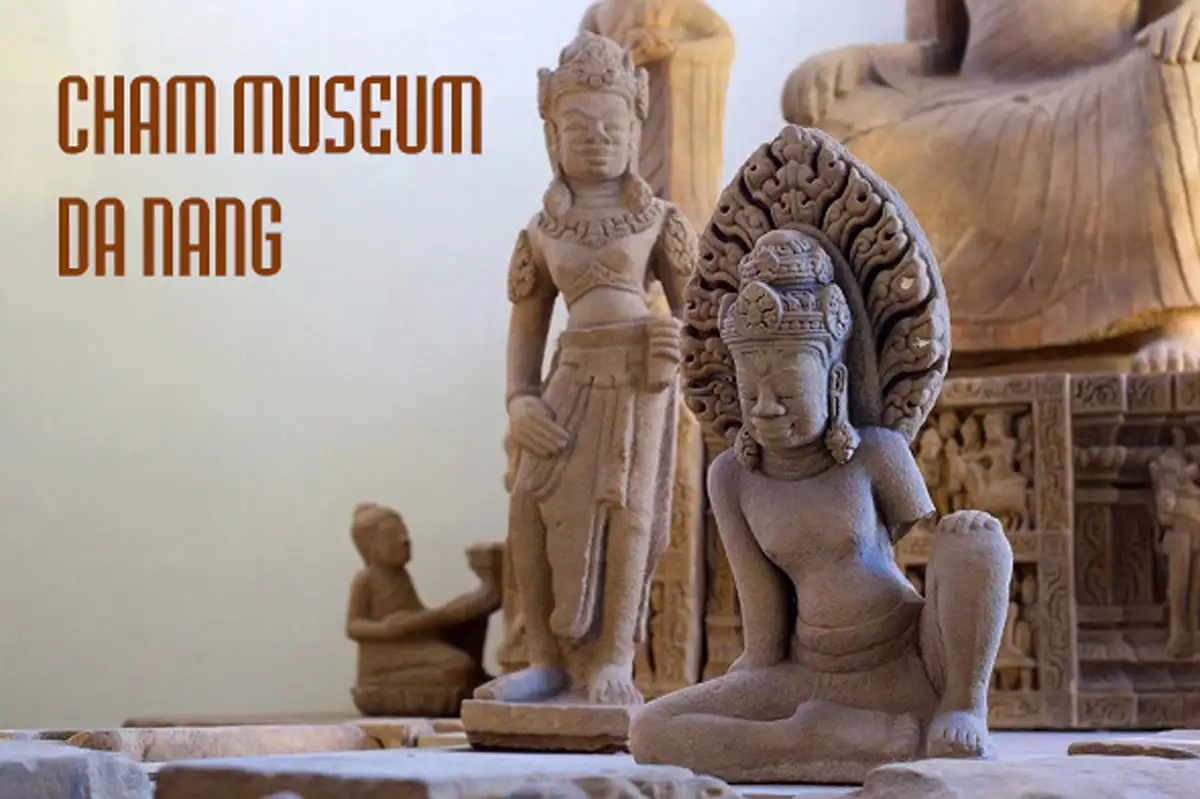Danang Fine Arts Museum: Exploring Central Vietnam’s soul
In the midst of Da Nang’s rapid development and lively beach scenes lies a surprisingly peaceful destination, the Danang Fine Arts Museum. Though smaller in scale compared to other city landmarks, it offers something different: a quiet space where art speaks, stories unfold, and Central Vietnam’s spirit is captured in brushstrokes and clay. Whether you’re an art enthusiast or a traveler seeking depth beyond the usual tourist trail, this museum promises a thoughtful experience.
Where is DaNang Fine Arts Museum located?
Conveniently located in the heart of the city at 78 Le Duan Street, Thach Thang Ward, Hai Chau District, the Danang Fine Arts Museum is a cultural destination that showcases the richness of Central and Central Highland Vietnamese art. Just a short distance from popular attractions like Dragon Bridge, the Cham Sculpture Museum, and Han Market, the museum is easy to find and access.

The museum is open daily from 8:00 AM to 5:00 PM, including weekends. Admission is reasonably priced at around 20,000 VND per adult, while students, seniors, and special groups may receive discounted or free entry. The museum features clear signage, elevator access, and a well-organized layout across its three exhibition floors, making it visitor-friendly for all ages.
There is a designated parking area right in front of the museum for both motorbikes and cars. During weekdays, parking is usually easy to find, but on weekends or holidays, it’s recommended to arrive early or use nearby public parking lots along Le Duan Street.
If you’re looking to explore a unique cultural and artistic space right in the heart of Da Nang, the Fine Arts Museum offers a rewarding and inspiring experience.
Read more: Top 9 Hoi An museum to experience the city’s history
The history and role of Danang Fine Arts Museum
Danang Fine Arts Museum began construction in May 2015 and officially opened its doors to the public on December 19, 2016. It is the first public fine arts museum in Central and Central Highlands Vietnam, and notably, the only city-level fine arts museum in the country at the time of its establishment. Its founding marked a significant milestone in Da Nang’s efforts to foster cultural and artistic development alongside rapid urban and tourism growth.
The museum was funded by the Da Nang People’s Committee, with professional guidance from the Vietnam Fine Arts Association and central cultural agencies. The museum covers a total area of nearly 1,900 square meters, featuring three exhibition floors and several modern auxiliary spaces for exhibitions, educational activities, and community interaction.
With a mission to preserve, showcase, and promote the unique artistic values of Da Nang, Central Vietnam, and the Central Highlands, the museum plays an important role in documenting both traditional and contemporary Vietnamese art. It also serves as a creative space for students and young artists, as well as a must-visit destination for both domestic and international travelers seeking a deeper understanding of local culture and art.
Explore the museum across three fascinating exhibition floors
Danang Fine Arts Museum is organized across three levels, each dedicated to a distinct thematic focus, from traditional art to contemporary expression. This well-curated layout allows visitors to journey through different periods and styles in Central Vietnam’s artistic development.
First Floor – Temporary exhibitions & Children’s art space
Upon entering the museum, visitors are greeted by an impressive bronze relief mural (5 × 3 meters) that illustrates the evolution of fine arts in Da Nang – a captivating introduction to the museum. The first floor mainly hosts short-term thematic exhibitions, which rotate throughout the year. These may include children’s artwork, street art, or community-based art projects.

A dedicated area is set aside for young visitors, where children can create and showcase their own artworks. Activities like painting, clay modeling, and hands-on workshops are often held here, making it a favorite spot for families, especially on weekends.
Second Floor – Modern art & Wartime themes
The second floor presents an expansive collection of modern art, including over 1,000 works of painting, printmaking, and sculpture created from the 20th century to the present. A number of these pieces reflect themes of war, patriotism, and social transformation, offering a profound look into Vietnam’s modern history through the lens of art.
A wide variety of materials – oil paint, lacquer, silk, and repoussé metalwork, are on display, showcasing both artistic diversity and craftsmanship. This section not only appeals to art lovers but also serves as a rich resource for researchers and students of contemporary Vietnamese art.
Third Floor – Folk art and traditional cultural heritage
The top floor highlights the folk art and cultural traditions of ethnic groups across Central Vietnam and the Central Highlands. Exhibits include wooden statues, ceremonial masks, religious paintings, traditional clothing, ceramics, and musical instruments, all steeped in regional heritage.

What sets this space apart is its ability to convey intangible cultural values alongside physical artifacts, immersing visitors in the spirit of the local communities. It’s a perfect stop for those looking to explore the deeper cultural layers of Vietnam through visual and ceremonial art forms.
After immersing yourself in the world of Central Vietnamese art at the museum, why not extend your cultural retreat with a relaxing escape to the coast? Just an hour’s drive from Da Nang, Bliss Hoi An Beach Resort & Wellness awaits on the peaceful shores of Binh Minh Beach. Tucked away from the tourist crowds, this seaside haven blends traditional architecture, soothing spa treatments, and ocean views, offering the perfect setting to unwind, reflect, and reconnect with nature after your artful adventure.
Other museums worth visiting in Da Nang
Beyond the Museum of Fine Arts, Da Nang is home to several cultural gems, quietly nestled yet rich in historical depth and artistic expression.
Da Nang Museum
Located near the foot of the Dragon Bridge, the Da Nang Museum feels like a walk through time. Its exhibitions trace the city’s evolution—from its early days on the banks of the Han River to the modern, vibrant urban center it is today. Everyday stories, wartime memories, and the diverse cultures of local ethnic groups are portrayed through engaging displays that reveal a deeper, more personal side of Da Nang.
Read more: Danang Museum: Discover the city’s history in one place
Museum of Cham Sculpture

Not far away, the Museum of Cham Sculpture offers a quiet, almost meditative atmosphere. Intricately carved sandstone statues tell ancient tales of the Champa Kingdom. With its arched hallways, soft lighting, and aged wooden scent, this museum feels less like a gallery and more like a sacred space where centuries-old cultural memories are preserved.
Dong Dinh Museum – The Garden of Memory
Tucked away in the lush forest of Son Tra Peninsula, Dong Dinh Museum invites visitors to slow down. Traditional wooden houses line the shaded paths, each one displaying collections of ceramics, ethnic artifacts, calligraphy, and photographs. Every object seems to hold a fragment of personal or collective memory, turning the museum into a quiet sanctuary for reflection.
Zone 5 Military Museum
To the west of the city, the Zone 5 Military Museum stands quietly – not imposing, but profoundly moving. In its courtyard rest old tanks and war machines, while inside are handwritten letters, black-and-white photographs, and relics that recall the region’s turbulent wartime past. Here, history doesn’t shout, it whispers through what was left behind.
The Danang Fine Arts Museum may not be the loudest attraction in the city, but that’s precisely its charm. In its quiet galleries and thoughtful exhibits, visitors find a slower rhythm and deeper connection to the local culture. Pair your visit with a few other hidden gem museums across Da Nang, and your journey will be more than sightseeing, it’ll be a quiet celebration of Central Vietnam’s artistic soul.







